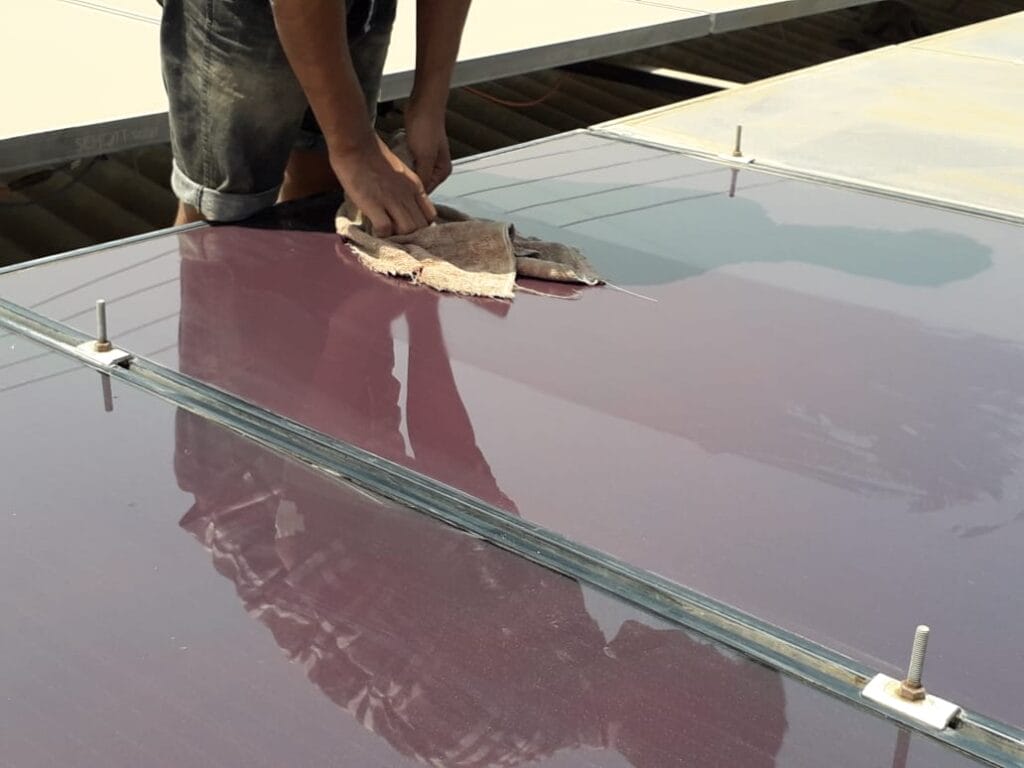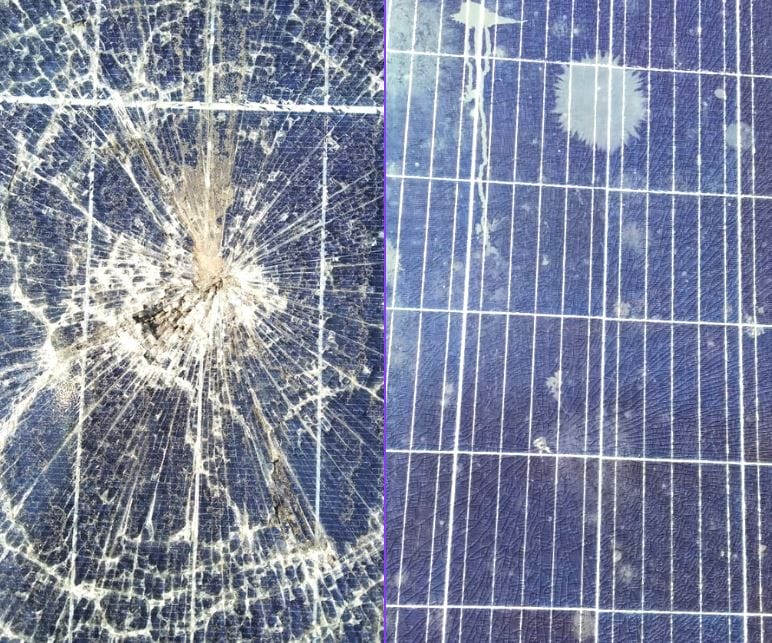When discussing solar panels and the energy they produce, often the question whether it’s genuinely environmentally friendly pops up. Many discussions revolve around what happens to solar panels when they’re no longer in use. How will they be disposed of? Will they be recycled? Do we have the resources to recycle them? If not, does this energy source remain as green as we thought?
Due to the lifespan of solar panels (25 to 30 years) and the failure to design for re-use or recycling at initial stage, India will begin to see large volumes of solar panels reaching the disposal stage soon. Huge quantities of this e-waste pose a risk of burdening already-overused landfills.
Activists often flag the environmental consequences of improper disposal and habitat disruption that can result from discarded solar panels. On the other hand, companies argue that the overall environmental benefits of solar energy production outweigh the waste issue.
In essence, the debate centers on finding a balance between ensuring the environmental sustainability of solar energy, sharing the responsibility for waste management, and addressing the economic implications of recycling and disposal.
Carbon footprint of solar panels
Enormous quantities of solar panel waste, which will be generated at the end of its lifespan, will be difficult to recycle or won’t be recyclable at all. They have the potential to overwhelm landfills, which will significantly escalate the carbon footprint associated with waste management.
This inadequate disposal of solar panel waste can result in pollution from dangerous substances found in the panels like Cadmium – a toxic carcinogen that accumulates in bones and Lead – a cumulative toxicant that can cause permanent damage to the neurological and cardiovascular systems. This will cause long-term effects on people and the surrounding environment exposed to these toxins.
While monocrystalline panels have a longer lifespan and are more efficient than polycrystalline solar panels, the manufacturing process uses more energy and produces more waste since each solar cell is a single, pure silicon wafer. Conversely, polycrystalline panels use melted silicon fragments poured into a mould, producing virtually no waste.
This means mono panels have a larger carbon footprint than poly panels, which may be an important consideration for environmentally-conscious home and business owners.

During the operation phase of solar panels, they are actively used in harnessing solar energy and generating electricity.
The solar panels receive sunlight and convert it into electrical energy through photovoltaic cells. Regular monitoring and maintenance of the panels, including cleaning, inspection, and repairs are necessary throughout the lifespan of the solar power system.
Mining of minerals
It is important to understand the lifecycle of solar panels, as the goal is to as sustainable as possible for at every stage of production of solar energy – from production to operation, and the decommissioning of the panel after 25 years.
One of the main environmental hazards in the lifecycle is – mining.
Material sourcing for solar panels involves extracting and procuring the raw materials required for their production, such as silicon, aluminium, glass, and other rare earth minerals.
According to a report by World Resources Institute (WRI), clean energy sources like solar are being installed at a rate that is twice as fast as that of fossil fuel power stations. This has resulted in a forecast of 300% rise in global demand for key minerals used in solar panels – including aluminium, copper, indium, iron, lead, molybdenum, nickel, silver, and zinc.
Mining raw materials for solar panels has a huge environmental impact that must be considered before calling it a ‘green’ energy source.
“There is no such thing as real green energy source,” says activist Sanjiv Valsan.
Read more: Green Hydrogen: The next frontier for clean energy
Decommissioning of panels
What happens to solar panels after 25 years?
“After 25 years, solar panels continue to operate, although their efficiency will have declined. At the end of the 25th year it will still be running at 80% capacity, and there is no need to replace the entire plant. It can still be used if it is maintained well,” says Mumbai’s Muhammad Sohail Shaikh, a solar entrepreneur, who has conducted over 100 solar panel installations in Maharashtra and Goa and is the COO of MSS Renewtech LLP.
“When it comes to recycling, if resources are readily available, many materials from decommissioned panels, such as glass, aluminium, and silicon, can be easily reused,” he explains.
But currently, if solar panels get damaged for any reason before their expected lifespan ends, there are no resources for their full recycling. As of now, the majority of damaged solar panels end up in landfills.

Going solar for incentives or environment?
Prajakta Desai, a resident of Thane initially wanted to install a solar panel. However, she did research and decided to wait. She says recycling of the panels is of significant consideration, if we aim to make an environmentally responsible choice.
According to Prajakta, the government has been giving subsidies and pushing for solar. Many institutes and companies are going for solar due to the long term monetary benefits.
“It’s true that the initial cost of solar panel installation can be recouped relatively quickly, resulting in lower electricity bills and a sense of environmental responsibility. But I, as an individual, have chosen to wait for a dependable recycling solution to be available in the market before proceeding because I want to switch to a complete green source of energy,” she says.
On the contrary, Sohail Shaikh, being hopeful, explains, “We need to keep in mind that the solar industry is still relatively new in India. The first net-metering solar power plant in Maharashtra was installed in 2015, and it has not even completed a decade yet.”
“Additionally, the power generation capacity of the new panels in the market has almost doubled, which increases their lifespan and efficiency. This extended period has allowed companies to develop new technologies that will be used for recycling in the future,” he says.
So, to go solar or to wait it out?
The journey towards adopting solar panels in India is not just about saving money on electricity bills or embracing an eco-friendly lifestyle; it also entails a thoughtful consideration of the long-term impact on the environment.
People like Prajakta Desai, who had initially contemplated installing solar panels, are making a conscious choice to pause and wait for improved recycling solutions for these panels. While mining and other alternatives still remain under discussion.
However, the industry is still young, is steadily evolving and demonstrating the potential to address these concerns comprehensively. As technology advances and awareness regarding the need for responsible manufacturing, disposal and recycling of solar panels continues to grow, the industry is responding with innovative solutions.
This ongoing transformation could lead to a more sustainable and eco-conscious future.
| For solar power related information you can visit the following government portals : National – https://solarrooftop.gov.in/ Maharashtra – https://www.mahaurja.com/meda/en/grid_connected_power/solar_power WRI Report – https://wri-india.org/sites/default/files/renewableenergytoresponsibleenergy_fullreport-lr.pdf |